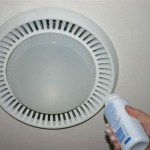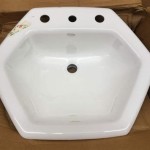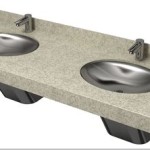How To Install A New Bathroom Ventilation Fan
A bathroom ventilation fan is a crucial component of any well-designed bathroom, playing a vital role in maintaining air quality, preventing moisture buildup, and reducing the risk of mold and mildew growth. Installing a new bathroom ventilation fan can significantly improve comfort and the longevity of bathroom fixtures and surfaces. The process, while potentially daunting, can be accomplished by a homeowner with basic electrical and carpentry skills, along with the appropriate tools and a thorough understanding of safety precautions.
This article provides a comprehensive guide to installing a new bathroom ventilation fan, covering everything from planning and preparation to the final wiring and testing. Prior to commencing the installation, it is essential to consult local building codes and regulations to ensure compliance. This may include requirements for venting the fan to the exterior, noise level restrictions, and electrical code adherence. Failing to comply with these regulations can result in fines or the need for costly rework.
Key Point 1: Planning and Preparation
The success of any home improvement project hinges on careful planning and thorough preparation. Installing a bathroom ventilation fan is no exception. This phase involves assessing the existing situation, selecting the appropriate fan, gathering the necessary tools and materials, and ensuring a safe working environment.
The first step is to determine the appropriate size and ventilation capacity of the fan. This is typically measured in cubic feet per minute (CFM). A general guideline is to have at least 1 CFM per square foot of bathroom area. For bathrooms larger than 100 square feet, additional factors should be considered, such as the number of showers, toilets, and people who regularly use the bathroom. The Home Ventilating Institute (HVI) provides detailed sizing recommendations based on bathroom size and usage.
Next, the homeowner must choose a suitable fan model. Bathroom ventilation fans vary in terms of airflow capacity, noise level (measured in sones), features (such as humidity sensors or integrated lights), and mounting style. Fans are typically mounted on the ceiling, either between joists or directly to the drywall. Consider the available space in the attic or above the ceiling and choose a fan that fits comfortably. Low-profile fans are often a good choice for tight spaces.
Once the fan model is selected, gather all the necessary tools and materials. These typically include:
- New bathroom ventilation fan
- Screwdrivers (Phillips and flathead)
- Wire strippers
- Wire connectors (e.g., wire nuts)
- Electrical tape
- Utility knife
- Drywall saw or jab saw
- Drill with various drill bits
- Stud finder
- Pencil
- Measuring tape
- Level
- Duct tape or foil tape
- Ducting (rigid or flexible)
- Exterior vent cap
- Safety glasses
- Gloves
- Ladder
- Voltage tester
Before starting any work, it is imperative to shut off the power to the bathroom circuit at the circuit breaker. Verify that the power is off using a voltage tester. This simple step is crucial for preventing electrical shock.
Key Point 2: Fan Installation
With the planning and preparation complete, the actual installation of the bathroom ventilation fan can begin. This involves removing the old fan (if applicable), cutting the opening for the new fan, installing the fan housing, connecting the ductwork, and wiring the fan to the electrical system.
If replacing an existing fan, carefully remove the old unit. This typically involves removing the fan cover, disconnecting the wires, and unscrewing the housing from the ceiling joists. Note the wiring configuration before disconnecting the wires to ensure proper reconnection later. Discard the old fan according to local regulations.
Using the template provided with the new fan, mark the outline of the opening on the ceiling. Use a stud finder to locate the ceiling joists and ensure that the opening is positioned between two joists. Use a drywall saw or jab saw to carefully cut along the marked outline, creating the opening for the fan housing. If obstructions such as pipes or wires are encountered, adjust the opening accordingly.
Position the fan housing in the opening and secure it to the ceiling joists using screws or nails. Ensure that the housing is level and securely attached. Some fans have adjustable mounting brackets that allow for easy installation between joists of different widths.
Connect the ductwork to the fan housing. Use either rigid metal ducting or flexible insulated ducting, depending on the installation requirements. Rigid ducting offers better airflow and is less prone to sagging, but flexible ducting is easier to install in tight spaces. Secure the ductwork to the fan housing using duct tape or foil tape, ensuring a tight and airtight seal. The ductwork must be vented to the exterior of the building, either through the roof or a sidewall. Avoid venting the fan into the attic or crawl space, as this can lead to moisture buildup and mold growth.
Install the exterior vent cap to protect the ductwork from rain, snow, and insects. The vent cap should be securely attached to the exterior wall or roof and properly sealed to prevent water leaks.
Key Point 3: Electrical Wiring and Testing
The electrical wiring of the bathroom ventilation fan is a critical step that must be performed correctly to ensure safe and reliable operation. This involves connecting the fan to the household electrical system, typically using standard wiring techniques and adhering to local electrical codes.
Refer to the fan's wiring diagram for instructions on connecting the wires. Typically, there will be three wires: a black (hot) wire, a white (neutral) wire, and a green or bare copper (ground) wire. Connect the corresponding wires from the fan to the household wiring using wire connectors (e.g., wire nuts). Ensure that the connections are tight and secure. Wrap the wire connectors with electrical tape for added protection.
The ground wire is particularly important for safety, as it provides a path for electrical current in the event of a fault. Ensure that the ground wire is properly connected to the grounding system of the house.
Once the wiring is complete, carefully tuck the wires into the fan housing and install the fan cover. Ensure that the cover is securely attached and that all wires are safely enclosed.
Before restoring power to the circuit, double-check all connections to ensure that they are correct and secure. Once satisfied, restore power to the circuit breaker and test the fan. The fan should start immediately and operate smoothly. Check for any unusual noises or vibrations. Verify that the airflow is adequate and that the exterior vent cap is functioning correctly.
If the fan does not operate properly, immediately turn off the power at the circuit breaker and troubleshoot the wiring connections. Consult a qualified electrician if necessary.
After confirming that the fan is operating correctly, inspect the surrounding area for any signs of damage or leaks. Repair any drywall damage and seal any gaps around the fan housing to prevent air leaks. The completed installation should be clean, neat, and professional.
Regular maintenance, such as cleaning the fan blades and vent cover, will help to ensure that the fan continues to operate efficiently and effectively for years to come.

Install A New Bathroom Vent Fan Light

Bathroom Exhaust Fans Building America Solution Center

How To Install A Bathroom Fan Step By Guide Bob Vila

How To Replace And Install A Bathroom Exhaust Fan From Start Finish For Beginners Easy Diy

How To Install A Bathroom Fan Diy Family Handyman

How To Install Clean A Bathroom Fan

Air Sealing Bathroom And Kitchen Exhaust Fans Building America Solution Center

Pin On Handyman

How To Use An In Line Exhaust Fan Vent Two Bathrooms Diy Family Handyman

Average Cost To Install A Bathroom Fan Forbes Home
Related Posts







